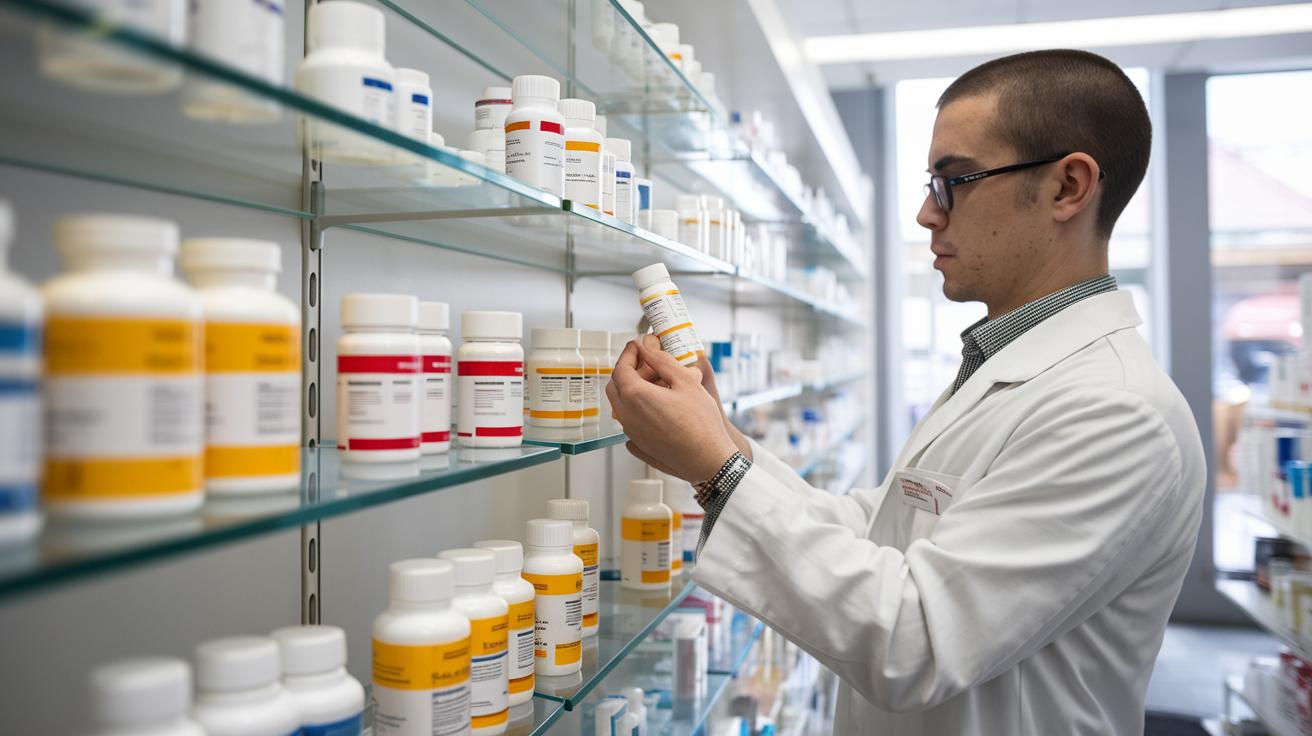Could the latest FDA approvals redefine the landscape of medical treatment? With recent endorsements like Litio Le Botulinum Toxin A WBG for glabellar lines, Exep for tackling complicated urinary tract infections, and Zeli offering relief for molluscum contagiosum, the horizon of healthcare innovations seems promising. As Good Sciencing delves into these pharmaceutical milestones, the article outlines the profound implications new drugs might have on patient care and treatment strategies. Understanding these advancements provides valuable insight into the dynamic shifts within the field of medicine.
Overview of Recent FDA-Approved Drugs

FDA approvals are critical in the realm of healthcare as they introduce new treatments that can significantly impact patient care and clinical practices. Each approval represents a rigorous evaluation process that ensures the safety and efficacy of the drug. By approving new medications, the FDA facilitates access to novel therapies that can address unmet medical needs, improve quality of life, and offer alternatives to existing treatments. The introduction of these drugs highlights the progress in pharmaceutical research and development, providing healthcare professionals with advanced tools to combat various health conditions.
- Litio Le Botulinum Toxin A WBG – for moderate to severe glabellar lines
- Exep – for complicated urinary tract infections
- Zeli – for molluscum contagiosum
Recent FDA approvals reflect significant advancements in healthcare, showcasing the continuous evolution of medical treatments. These drugs, such as Litio Le Botulinum Toxin A WBG, Exep, and Zeli, demonstrate the potential for improved patient outcomes through innovative therapeutic approaches. The approval of such medications underscores the dedication of researchers and the pharmaceutical industry in developing solutions for specific health challenges. By expanding the arsenal of available treatment options, these approvals foster a dynamic healthcare environment, encouraging further innovation and setting the stage for future breakthroughs in medical science.
Upcoming Drugs Awaiting FDA Approval in 2025

Suzetrigine
Suzetrigine is anticipated to gain FDA approval for the treatment of moderate-to-severe acute pain. This novel non-opioid medication addresses a critical need for alternative pain management solutions, particularly in light of the opioid epidemic. The approval of Suzetrigine could significantly impact the pharmaceutical market by reducing reliance on opioids, thus potentially lowering opioid-related fatalities. Its introduction is expected to enhance the spectrum of non-opioid pain management options available to healthcare providers, offering a safer alternative for patients requiring effective pain relief.
Semaglutide
Semaglutide, a drug already approved for diabetes and weight loss, is currently under review for additional uses, including the reduction of chronic kidney disease risk in adults with type 2 diabetes and the treatment of metabolic dysfunction-associated steatohepatitis (MASH) with moderate to advanced liver fibrosis. Its expanded applications are backed by promising research that highlights its potential in addressing these significant health concerns. If approved for these new indications, Semaglutide could transform the management of chronic kidney disease and MASH, offering new hope for patients and potentially reducing healthcare costs associated with these conditions.
Nipocalimab
Nipocalimab is undergoing phase 3 trials for the treatment of generalized myasthenia gravis, a condition characterized by muscle weakness. The trials have demonstrated that Nipocalimab can provide sustained disease control over six months. This promising outcome suggests that Nipocalimab could offer long-term relief for patients, improving their quality of life. Its approval would mark a significant advancement in the therapeutic options available for managing myasthenia gravis, addressing an unmet need for more effective long-term treatment strategies.
Fam-trastuzumab deruxtecan-nxki
Fam-trastuzumab deruxtecan-nxki has been granted priority review by the FDA for its application in treating HER2-low or HER2-ultralow metastatic breast cancer in patients who have previously undergone at least one line of endocrine therapy. The priority review status underscores the drug's potential to significantly enhance treatment outcomes for these patients. If approved, it could offer a new therapeutic avenue for a subgroup of breast cancer patients with limited options, potentially improving survival rates and quality of life. This reflects an important step forward in personalized cancer treatment, emphasizing the ongoing shift towards more targeted therapies in oncology.
FDA Approval Process and Its Impact on Drug Innovation

The FDA approval process is a critical component in the lifecycle of drug development, ensuring that new pharmaceutical products are both safe and effective for public use. Central to this process is the FDA's Center for Drug Evaluation and Research (CDER), which rigorously evaluates new drug applications through a series of stages. Initially, the process involves preclinical studies and clinical trials that assess safety and efficacy. Upon successful trial results, a New Drug Application (NDA) is submitted, after which the CDER conducts a comprehensive review. Orphan drugs, which target rare diseases, receive special regulatory attention through the Prescription Drug User Fee Act (PDUFA) dates, expediting their review and approval. This structured approach not only guarantees the quality of new medications but also facilitates public access to innovative treatments.
| Milestone | Description |
|---|---|
| Preclinical Testing | Initial laboratory and animal studies to assess safety and biological activity. |
| Phase 1 Trials | Small-scale trials to evaluate safety and dosage in humans. |
| Phase 2 Trials | Medium-scale trials focusing on efficacy and side effects. |
| Phase 3 Trials | Large-scale trials to confirm effectiveness, monitor side effects, and compare with standard treatments. |
The structured FDA approval process significantly fosters innovation within the pharmaceutical industry by setting rigorous standards that drive research and development. By establishing clear regulatory milestones, the process encourages companies to invest in groundbreaking research and novel drug development, knowing that there is a structured pathway leading to market approval. Moreover, the emphasis on orphan drugs highlights the potential for new treatments in areas with previously unmet medical needs, prompting pharmaceutical companies to explore less conventional therapeutic avenues. This results in a dynamic environment that continuously pushes the boundaries of medical science, leading to the introduction of innovative drugs that improve patient outcomes and broaden the spectrum of available treatment options.
Clinical Trials and Their Role in FDA Drug Approvals

Clinical trials are fundamental to the FDA drug approval process, serving as the primary method for assessing the safety and efficacy of new pharmaceutical compounds. These trials provide the scientific evidence required to demonstrate that a drug is both effective for its intended use and safe for the population. By meticulously evaluating clinical trial data, the FDA can make informed decisions about whether a new drug should be approved for public use. This rigorous evaluation process helps protect public health by ensuring that only drugs meeting stringent safety and efficacy standards reach the market.
Clinical trials are conducted in several phases, each with specific objectives. Phase 1 trials focus on assessing the safety and determining the appropriate dosage of a drug in a small group of healthy volunteers. Phase 2 trials aim to evaluate the efficacy of the drug and further assess its safety, typically involving a larger group of participants who have the condition the drug is intended to treat. Phase 3 trials, such as those conducted for Nipocalimab, are large-scale studies that confirm the drug's effectiveness, monitor side effects, and compare the new treatment to standard therapies. These phases collectively provide comprehensive data that inform the FDA's decision-making process.
The results of clinical trials significantly influence FDA evaluations and safety assessments. Positive trial outcomes, demonstrating a drug's efficacy and acceptable safety profile, are crucial for obtaining FDA approval. Conversely, trials that reveal safety concerns or insufficient efficacy can lead to the rejection of a drug application. The rigorous analysis of trial data ensures that only those drugs that have proven therapeutic benefits and manageable risks are approved, maintaining the integrity and trustworthiness of the pharmaceutical market.
Implications of FDA Approvals for the Pharmaceutical Market

The immediate effects of new drug introductions following FDA approvals are profound, influencing drug market dynamics significantly. Each new medication, such as Exep for complicated urinary tract infections and Suzetrigine for acute pain, serves to diversify treatment options, enabling healthcare providers to tailor therapies more precisely to patient needs. The entrance of these drugs into the market can prompt shifts in prescription patterns, as practitioners begin to incorporate these novel treatments into their practice. Moreover, these introductions often spark competitive responses from pharmaceutical companies, potentially leading to enhanced market competition and innovation.
- Changes in prescription patterns
- Market exclusivity and competition
- Adaptation of treatment protocols
In the long term, FDA approvals drive substantial shifts in pharmaceutical strategies and patient care paradigms. As new drugs establish their presence, they can lead to the adaptation of treatment protocols, particularly when they offer superior efficacy or safety profiles compared to existing therapies. This evolution in treatment options necessitates ongoing education for healthcare providers to stay abreast of the latest advancements. Additionally, pharmaceutical companies may alter their research and development focus, prioritizing areas where unmet needs persist or where new therapies show potential for significant patient impact. This ongoing cycle of innovation and adaptation underscores the critical role FDA approvals play in shaping the future of healthcare delivery.
Final Words
Exploring upcoming drugs approved by FDA reveals significant strides in medical treatment advancements. The recent approvals of Litio Le Botulinum Toxin A WBG, Exep, and Zeli introduce new options for patients with conditions such as glabellar lines, urinary tract infections, and molluscum contagiosum.
Future approvals of innovative treatments like Suzetrigine and Semaglutide promise further breakthroughs, positively influencing patient care and expanding treatment possibilities. Through rigorous clinical trials and a comprehensive approval process, these medications contribute to a dynamic pharmaceutical landscape, enhancing healthcare innovation. This ongoing progress reflects the promising future of medical advancements.
FAQ
What drugs are waiting for FDA approval?
Drugs like Suzetrigine for moderate-to-severe acute pain, and Semaglutide for new uses such as kidney disease risk reduction, are currently awaiting approval, highlighting the continual progress in medical advancements.
What are the new prescription drugs in 2024?
In 2024, new prescription drugs include Litio Le Botulinum Toxin A WBG for glabellar lines, Exep for complicated urinary tract infections, and Zeli for molluscum contagiosum, offering novel treatments and advancements in patient care.
What is the most anticipated FDA approval in 2024?
Fam-trastuzumab deruxtecan-nxki, targeting HER2-low breast cancer, stands out as highly anticipated due to its potential to reshape breast cancer treatment, reflecting the ongoing innovation in oncology therapeutics.
What is a new drug approval?
New drug approval is the process through which the FDA evaluates and authorizes a new medication for public use, ensuring it meets standards for safety, efficacy, and quality through rigorous clinical trials and reviews.


